A Visit to Luxor’s Giant Temple Complex of Karnak
This guide details a visit to the temple complex of Karnak in Luxor, Egypt.
A visit to Karnak
After a beautiful river cruise down the Nile from Edfu I had arrived in Luxor, a city known in ancient times as Thebes.
Luxor was the final stop of my river cruise, although there were still some major sights to visit in town as part of my cruise itinerary.
I disembarked the ship with my guide Mohammed and we headed from the quay by private car towards Karnak, which would be the first ancient Egyptian sight we would visit in Luxor.


Karnak history
Located on the east bank of the River Nile, the temple complex of Karnak is arguably Luxor’s top sight.
Indeed, after the Pyramids of Giza Karnak is the second-most visited sight in all of Egypt.
What makes Karnak so unique is the fact that it wasn’t constructed during a specific era of Ancient Egypt, as from the Middle Kingdom onward different Pharaohs all left their mark by adding new buildings to the temple complex for well over 1,600 years.
This lasted all the way until the times of the Greco-Egyptian Ptolemaic Kingdom – and in those years Karnak never lost its importance as one of the main religious centres of the country.
Because of its layered history, it’s a great idea to explore Karnak with a professional guide who can explain more about all the different historical eras of ancient Egypt, mythology, religious practices and all the symbolism behind the design of a temple.
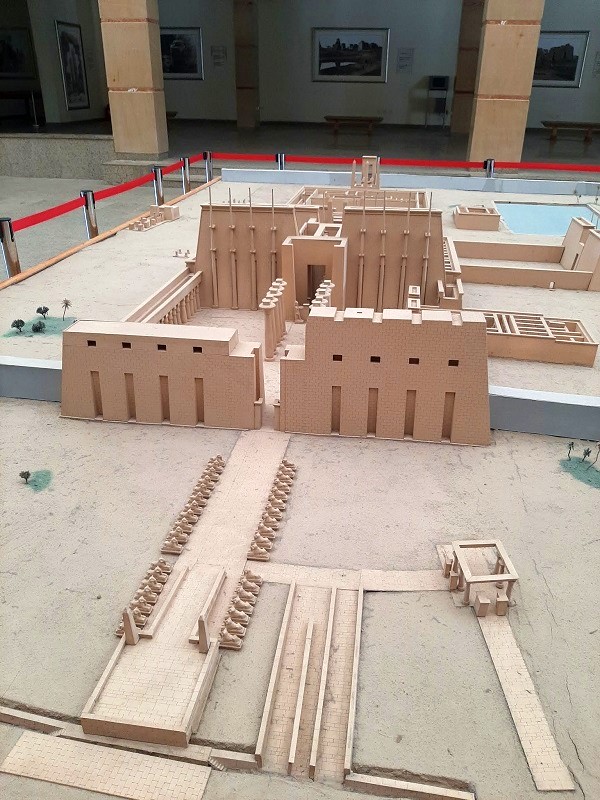
Entering Karnak
Before you can enter the temple complex, you have to buy your entrance ticket at the visitor centre.
As you walk from the visitor centre to the temple you will cross a dry moat which used to be filled with water and linked to the River Nile.
You can still see the old slipway and docks as you walk across the moat.
This road leading into Karnak is known as the Avenue of the Rams or the Avenue of the Sphinxes, which doesn’t come as a surprise when you see the dozens of Sphinx-like ram statues flanking the road at both sides.
The avenue used to run all the way from Karnak to Luxor Temple and was lined with Sphinx statues over its entire length of almost 3 kilometres.
The ram was the sacred animal of Amun-Ra, the supreme solar deity and creator to whom the main section of the Karnak temple complex is dedicated.
In front of the first pylon (gateway) of Karnak you can see a dual statue of Pharaoh Ramses II.



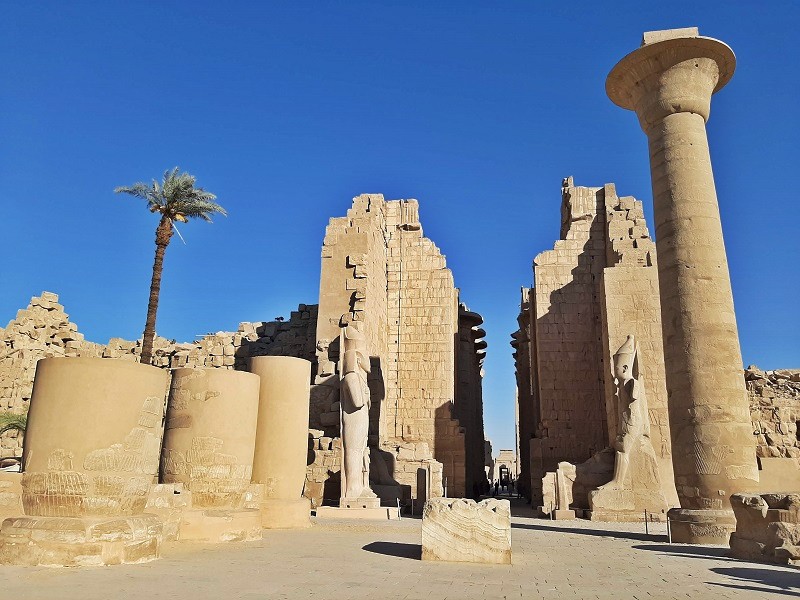


Barque shrine
Before you pass through the first pylon of Karnak it is worth it to walk to your right towards a small shrine built against the outer wall.
This shrine was used as a way station to temporarily store a barque, which is a sort of ceremonial boat on which statues of gods were placed during processions.
The barque shrine at Karnak has three chambers, with the left one being dedicated to Khonsu, the middle one to Amun-Ra and the right one to Mut.
These three gods are known as the Theban triad as they were the most popular gods in Ancient Thebes.
During the annual Opet Festival the barques of the three main Theban deities were carried from Karnak to Luxor Temple where ritual ceremonies were performed.



Precincts
The Karnak temple complex is absolutely massive as the total size is more than a square kilometre.
Although Karnak is certainly a wonderful place to visit at leisure, it pays off having a guide with you who can point you at the most interesting sights in the complex.
Karnak consists out of three different enclosed precincts: There is the Precinct of Amun-Ra, the Precinct of Mut (Amun’s consort) and the Precinct of Montu (the ancient war god of Thebes).
The Precinct of Amun-Ra, by far the largest of all three, is the place where most people focus their visit on as the other two precincts are much less preserved.
It was also the only precinct I visited on my visit of Karnak.
Once you pass the first pylon you are at the forecourt, with the Temple of Ramses II being located on your right-hand side.
Ahead of you is the second pylon – the gateway that gives entry to the great hypostyle hall.


Hypostyle hall
Once you are through the second pylon you find yourself in the Great Hypostyle Hall of Karnak, an area also known as the column hall or column court.
The Great Hypostyle Hall is the most magnificent part of Karnak and you will almost certainly be amazed by the sheer size of the columns.
It really feels like you are standing in a forest of Egyptian columns.
There are a total of 134 columns in the Great Hypostyle Hall, with the biggest being almost 23 metres (75 ft) high and having a diameter of more than 3 metres (10 ft).
Most of the columns feature striking reliefs showing all kinds of different scenes such as Pharaohs making offers to the gods or actual battle scenes of campaigns fought in Syria such as the Battle of Kadesh.
Some of the columns in the hypostyle hall are connected by beams on top of them.
A couple of engravings on these beams are beautifully preserved with their original colours still intact, so do make sure that you look up as well!
At the side of the columns court of Karnak you can also see some magnificent engravings, with one particularly interesting one showing the enemies of Ancient Egypt, with Africans being depicted with full lips and big noses and the Hittites having moustaches and large chins.
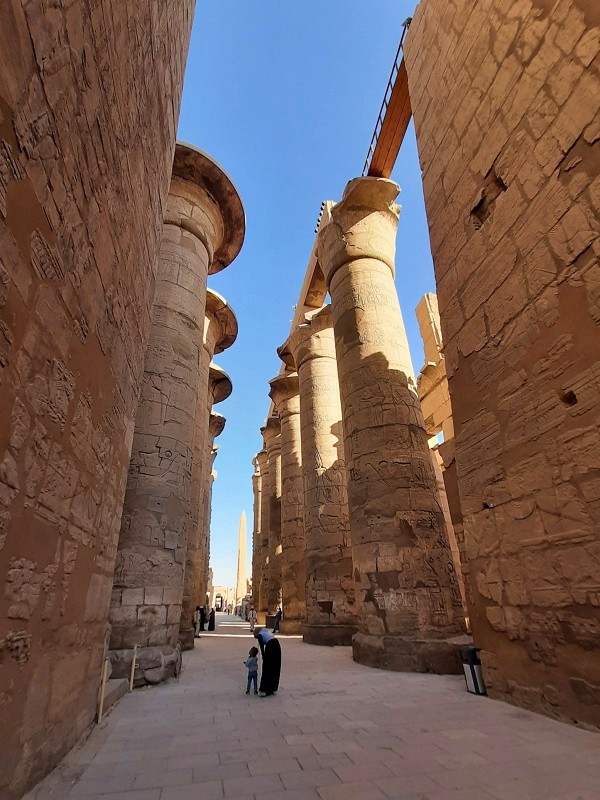





Obelisks
Between the third and fourth pylon you can admire the Obelisk of Thutmose I.
Measuring 23 metres high, this obelisk was one of four which originally stood here.
A bit further ahead you will see another obelisk that is still standing tall.
This is the Obelisk of the female Pharaoh Hatshepsut, which is just over 27 metres.
Hatshepsut had originally ordered for two obelisks to be made at the quarry in Aswan, although the second obelisk fell down and broke into multiple fragments.
The tip of the fallen obelisk of Hatshepsut can still be seen, as it is showcased a short distance away near the Sacred Lake.
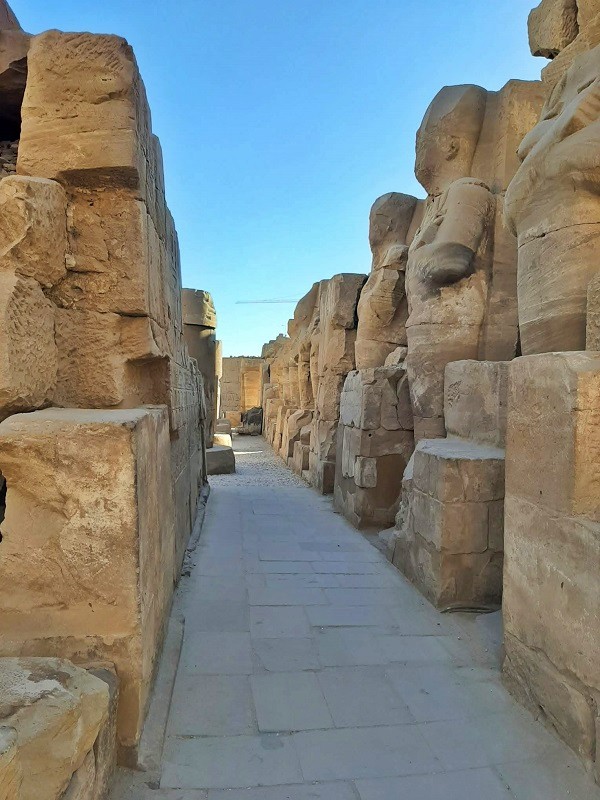
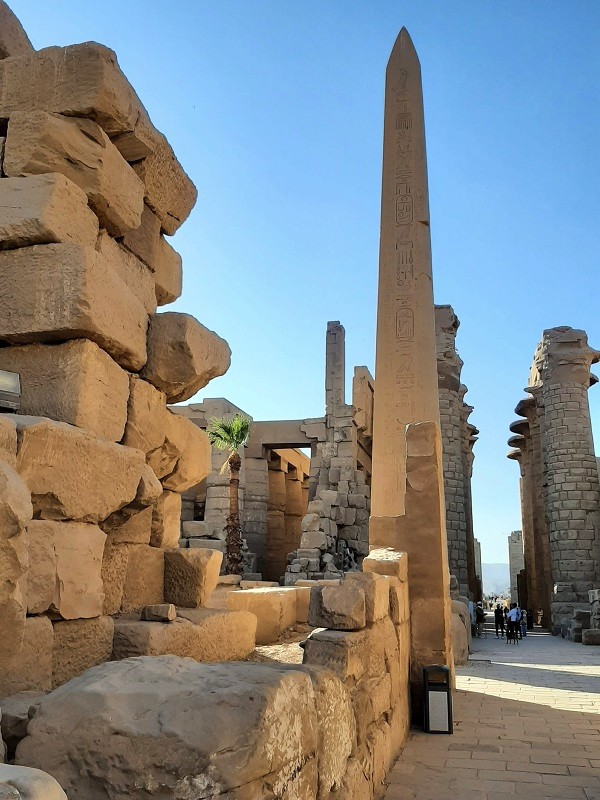

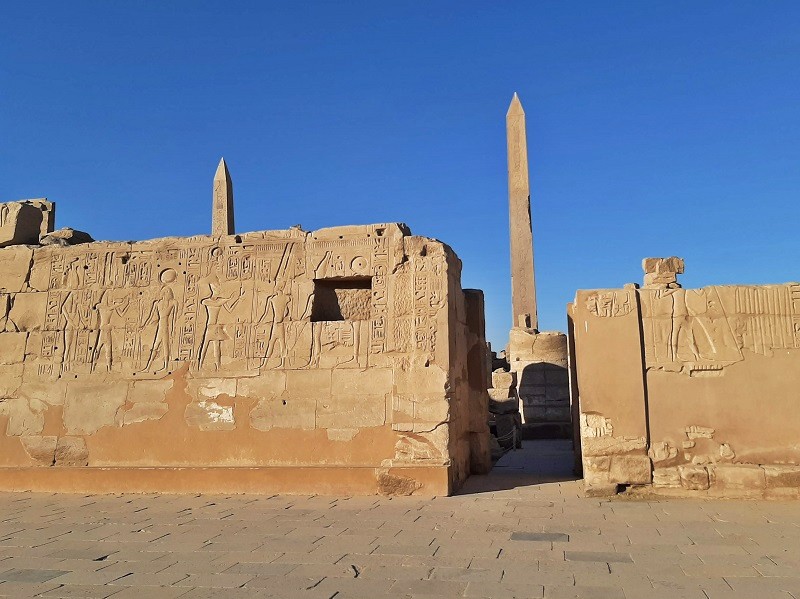

Sanctuary
The heart of the temple of Karnak is the sanctuary, where you can still see the pedestal on which the barque of Amun-Ra once rested.
Just outside the sanctuary you can see a wall with interesting engravings showing the cities that were conquered by the great Pharaoh Thutmose III.


Side rooms
In the side rooms of the temple of Karnak there are some more fascinating engravings to admire, although you do need a guide with you to make them come alive and to learn more about their backstory.
In particular, the defaced reliefs of the female Pharaoh Hatshepsut are highly interesting.
Pharaoh Thutmose III, the stepson of Hatshepsut, had basically ordered to remove his stepmother from the history books by tearing down her statues, defacing her monuments and removing her from all official records.
One particularly striking relief shows the coronation ritual of Hatshepsut in which she is purified by the gods Horus and Thot.
However, while the two gods are clearly recognisable and still show some bits of their original paint, the image of Hatshepsut has been chiselled away.
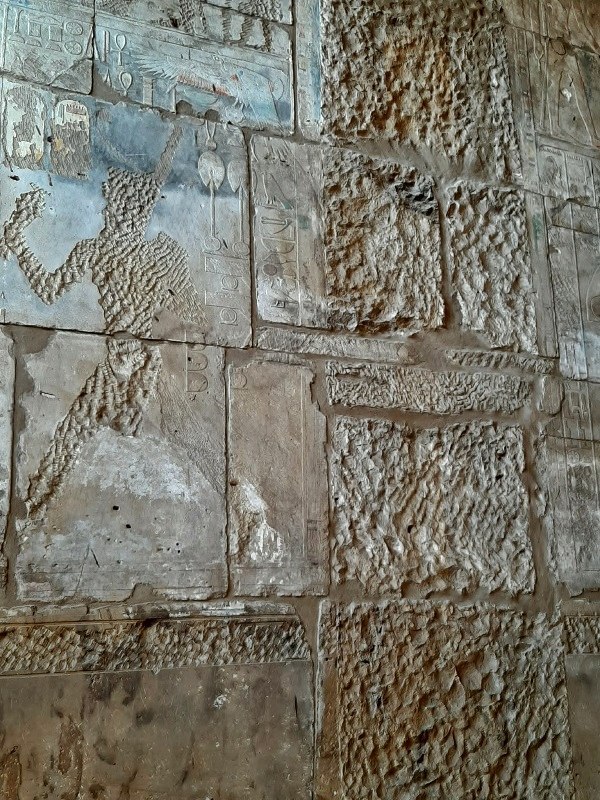
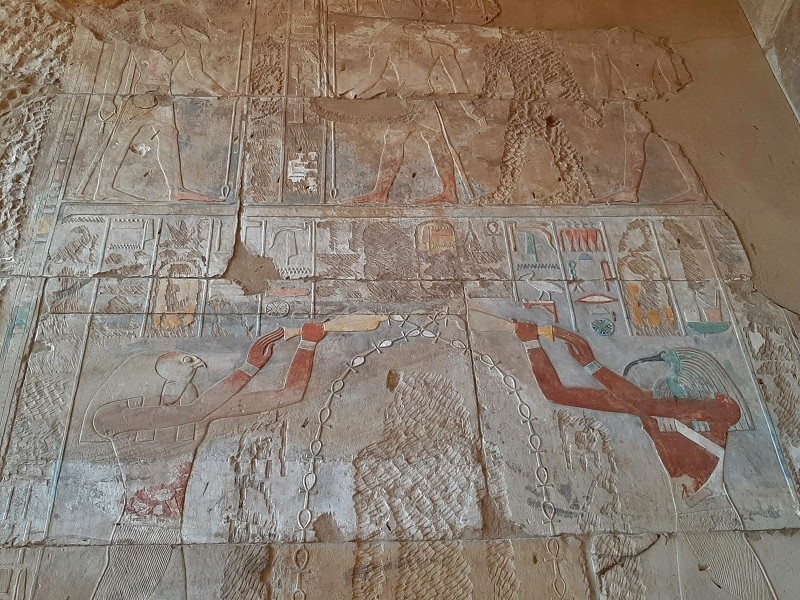
Festival Hall of Thutmose III
Another must-visit sight at Karnak is the Festival Hall of Thutmose III.
Also known as the Akh-menu, this shrine has some of the best preserved reliefs and paintings of any ancient Egyptian temple.
It was originally built to celebrate the jubilee of Thutmose III, but was later also used to host other ceremonies and festivities such as those during the annual Opet Festival.
The columns in the Festival Hall are rather unusual as they almost resemble tent poles.
This was reportedly done so because it would remind the Great Pharaoh Thutmose III of all his military campaigns and victories.
The bright blue colours that still remain on the columns and ceiling are absolutely striking.
On one of the columns you can see an image of a haloed Jesus Christ as the Festive Hall was used as a church during early Christian times.
Nearby, you can also find a shrine dedicated to Amun-Ra with a well-preserved painted relief.
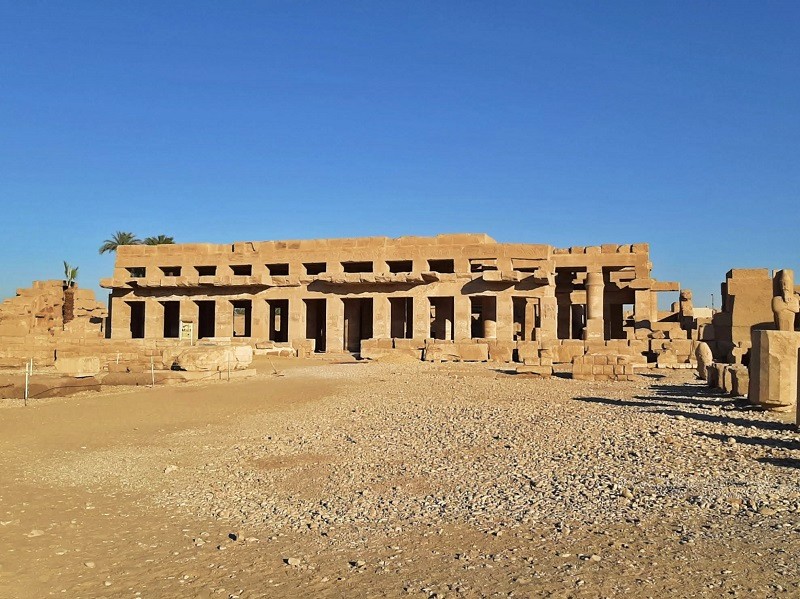


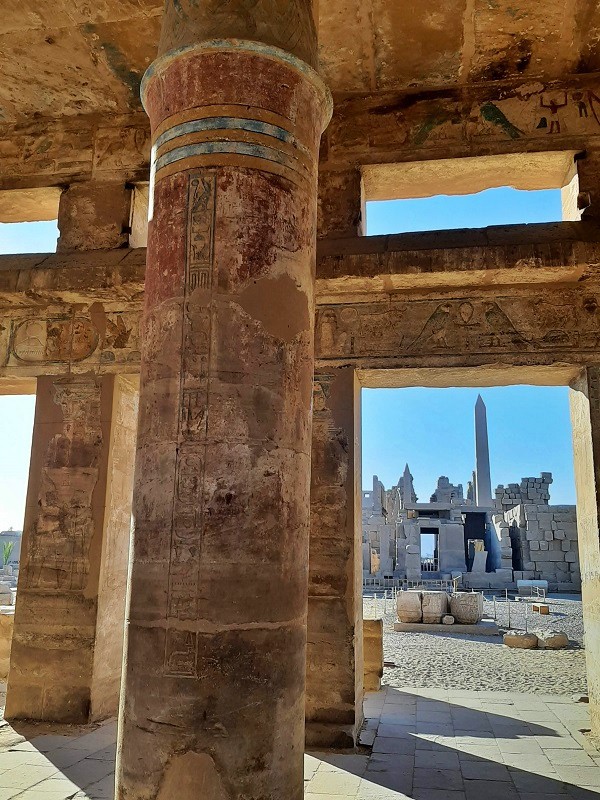


A walk around Karnak
After my guided tour around Karnak I had some free time to explore the complex at leisure.
As I already wrote before, Karnak is a massive archaeological site.
You should therefore also walk through the more ruined parts of the temple complex if you want to get a full grasp of Karnak’s massive size.
Besides, the further you walk away from the Great Hypostyle Hall, the less crowded it gets, allowing you to absorb the site in complete silence.



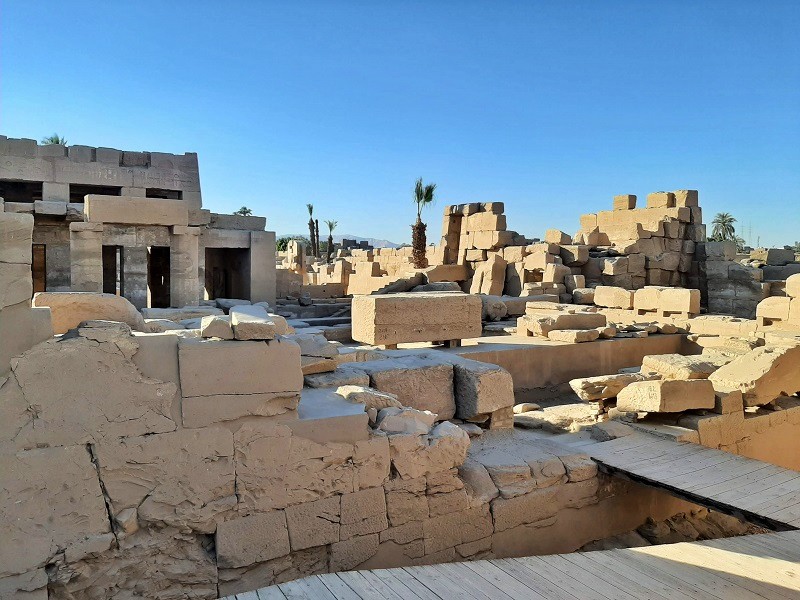

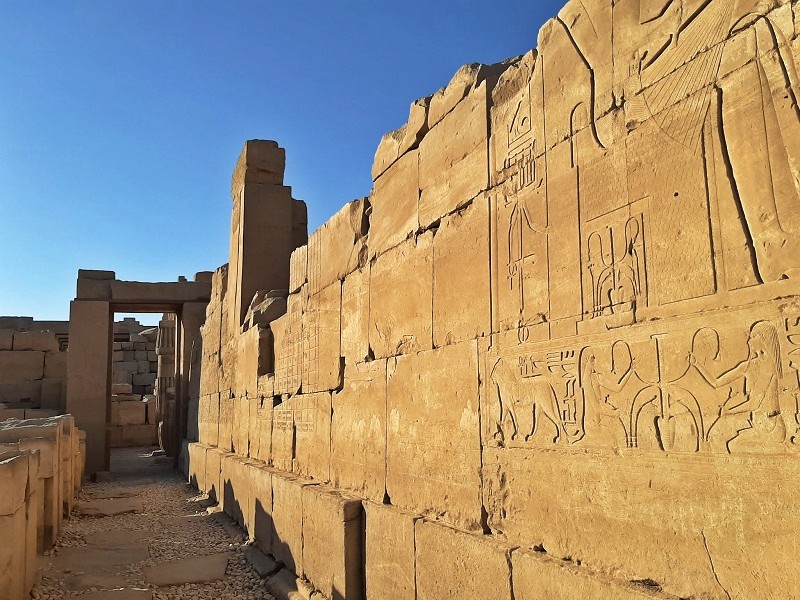
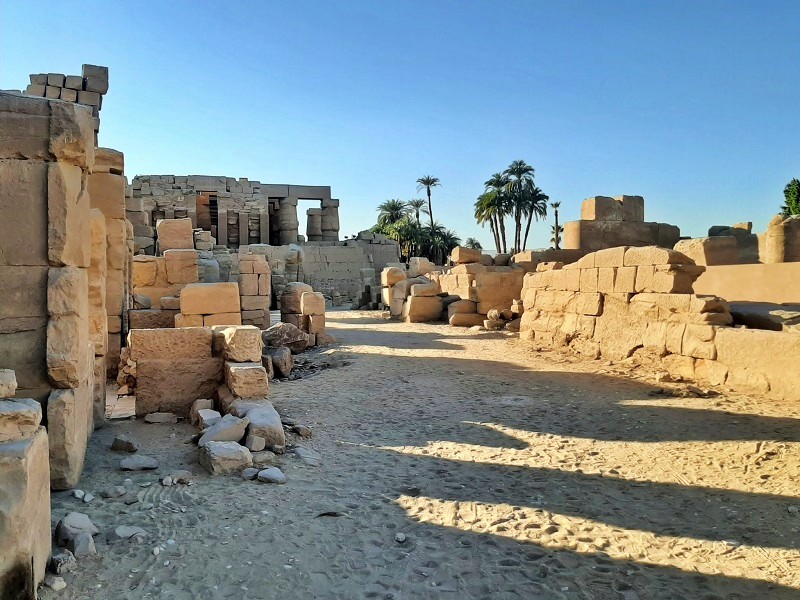
Late afternoon photos
Before returning to the main entrance of Karnak to meet up again with my guide Mohammed, I went back to the Great Hypostyle Hall to admire the surroundings there for a bit longer.
The Great Hypostyle Hall of Karnak is best visited in the early morning or late afternoon as the sunlight creates fabulous diagonal shadows over the court and illuminates the columns in beautiful soft and warm colours.
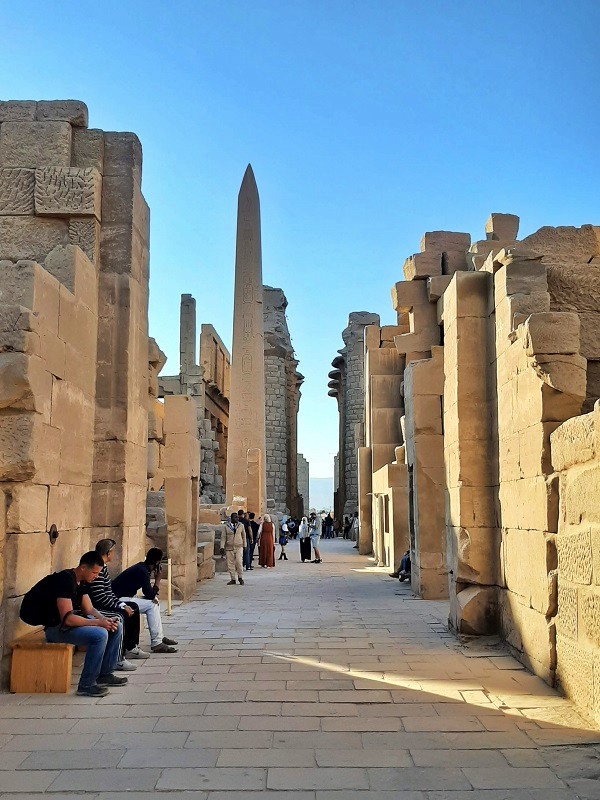
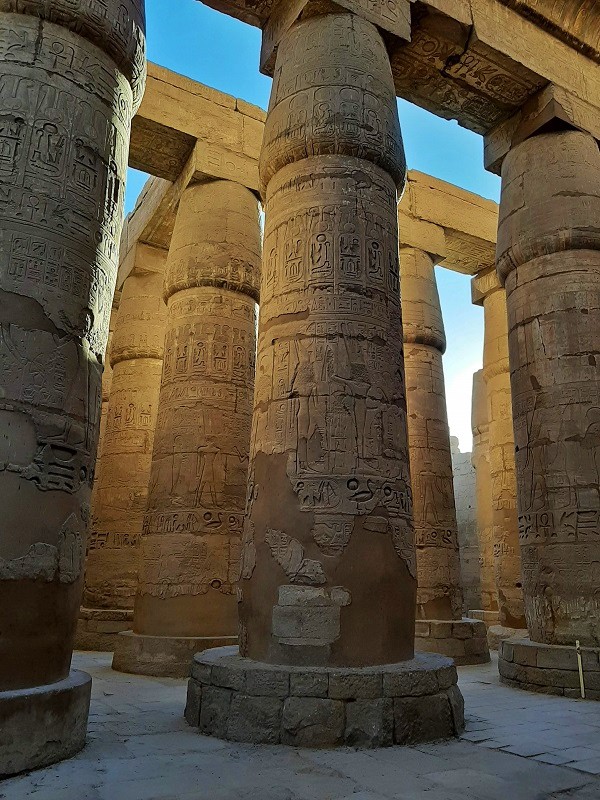

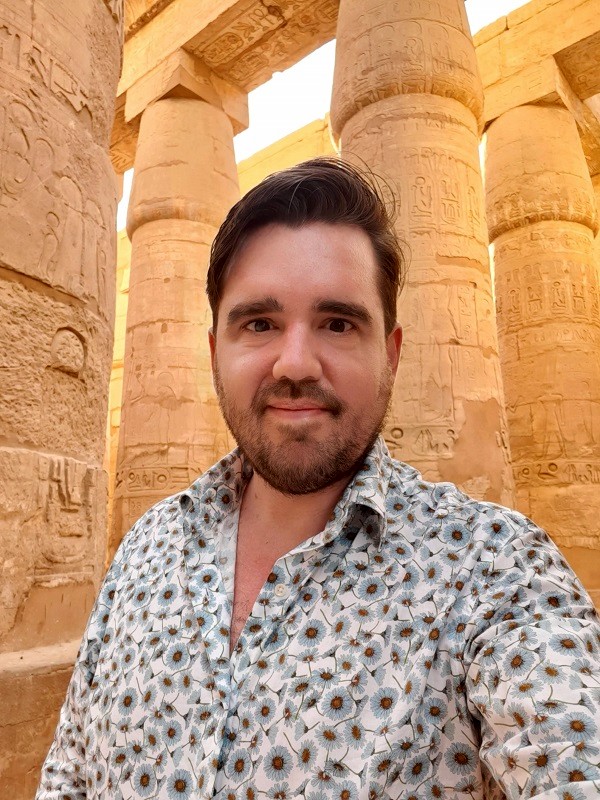
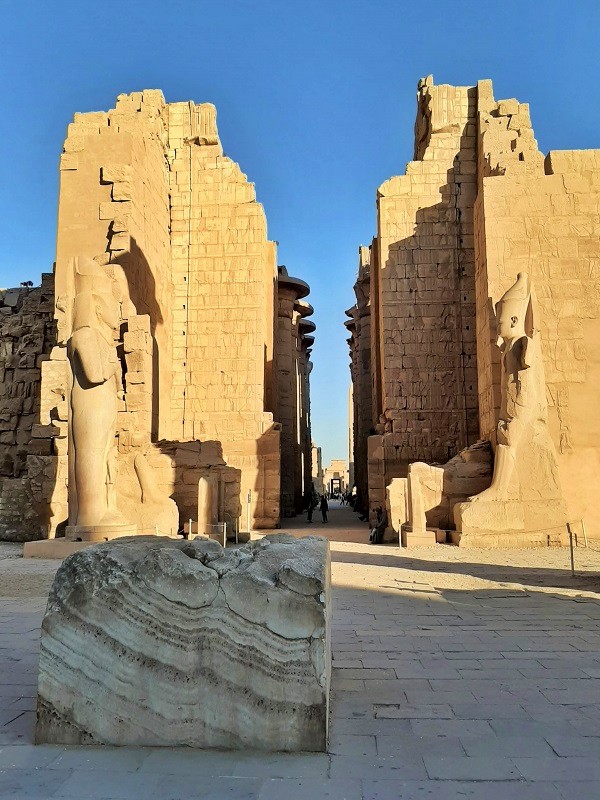
Conclusion
The temple complex of Karnak is one of Egypt’s most unique archaeological sites and a must-visit if you find yourself in the Luxor area.
Karnak was one of the main religious centres of Ancient Egypt and for well over 1,600 years from the Middle Kingdom to the Ptolemaic Era it was expanded and renewed by multiple Pharaohs.
Because you can find so many different buildings, reliefs, statues and obelisks from completely different eras, Karnak really is unlike any other archaeological site in Egypt.
As the history and underlying symbolism and mythology of the temple complex can be difficult to understand, Karnak is best explored with a guide.
If you do visit on your own, make sure that you don’t miss out on the awe-inspiring Great Hypostyle Hall and the wonderful painted columns and reliefs in the Festival Hall of Thutmose III.
Acknowledgements
This article about the Karnak temple complex in Luxor was written with the help and support of my guide Mohammed Badawy, who is a professional archaeologist.
If you require a professional guide when you visit a temple or other sight in Egypt, I can highly recommend Mohammed’s services as he is extremely courteous and a great source of knowledge about everything related to ancient Egypt.
Mohammed can be contacted by e-mail (mohammed_badawy95 *at* yahoo.com) as well as by phone or WhatsApp on the number +201005448691).
Trip report index
This article is part of the ‘Walk Like an Egyptian: A Grand Tour of Egypt‘ trip report, which consists of the following chapters:
1. Red-Eye Ramblings of a Late Night Flight to Cairo
2. A Visit to the Pyramids of Giza by Camel
3. Review: Sofitel Nile El Gezirah, Zamalek, Cairo
4. Exploring the Medieval Old Town and Islamic History of Cairo
5. Visiting the Museum of Egyptian Antiquities in Cairo
6. Mar Girgis: The Churches of Christian Old Cairo
7. Review: Ernst Watania Sleeping Train Cairo to Aswan
8. The Ancient Quarry of Aswan and the Unfinished Obelisk
9. A Boat Ride From Aswan to the Temple of Isis at Philae
10. A Visit to the Aswan High Dam and Lake Nasser
11. A Visit to the Nubian Village on Aswan’s Elephantine Island
12. Aswan Guide: A Visit to Egypt’s Most Stunningly Located City
13. A Half Day Trip From Aswan to Amazing Abu Simbel
14. Nile River Cruise Guide: All Info for Your Egypt Boat Trip
15. Review: M/S Princess Sarah Nile River Cruise Ship
16. Nile Cruise: Sailing From Aswan to Kom Ombo
17. A Visit to the Ancient Crocodile Temple of Kom Ombo
18. A Visit to the Temple of Horus at Edfu
19. Nile Cruise: Sailing From Edfu to Luxor
20. Luxor, Egypt: Visiting the Sights of Ancient Thebes
21. A Visit to Luxor’s Giant Temple Complex of Karnak (current chapter)
22. Visitor Guide to Wonderful Luxor Temple
23. Valley of the Kings: A Visit to Luxor’s Ancient Necropolis
24. The Temple of Hatshepsut: A Visit to a Unique Mortuary Temple
25. Review: Sofitel Winter Palace Hotel, Luxor, Egypt
26. Review: Daytime Train Luxor to Cairo, Egypt
27. Review: Steigenberger Hotel El Tahrir, Cairo
28. A Visit to the Pyramid of Djoser and the Saqqara Necropolis
29. A Visit to the Dahshur Pyramid Complex
30. Memphis: Exploring the Old Capital of Ancient Egypt
31. From Cairo to Alexandria by Train: My Travel Experience
32. Review: Paradise Inn Le Metropole Hotel, Alexandria, Egypt
33. Alexandria: A Visit to Egypt’s Historic Mediterranean Port City
34. Egypt: Impressions and Reflections After My Two Week Trip
35. Epilogue: Safety and How to Deal With Street Hassle in Egypt

